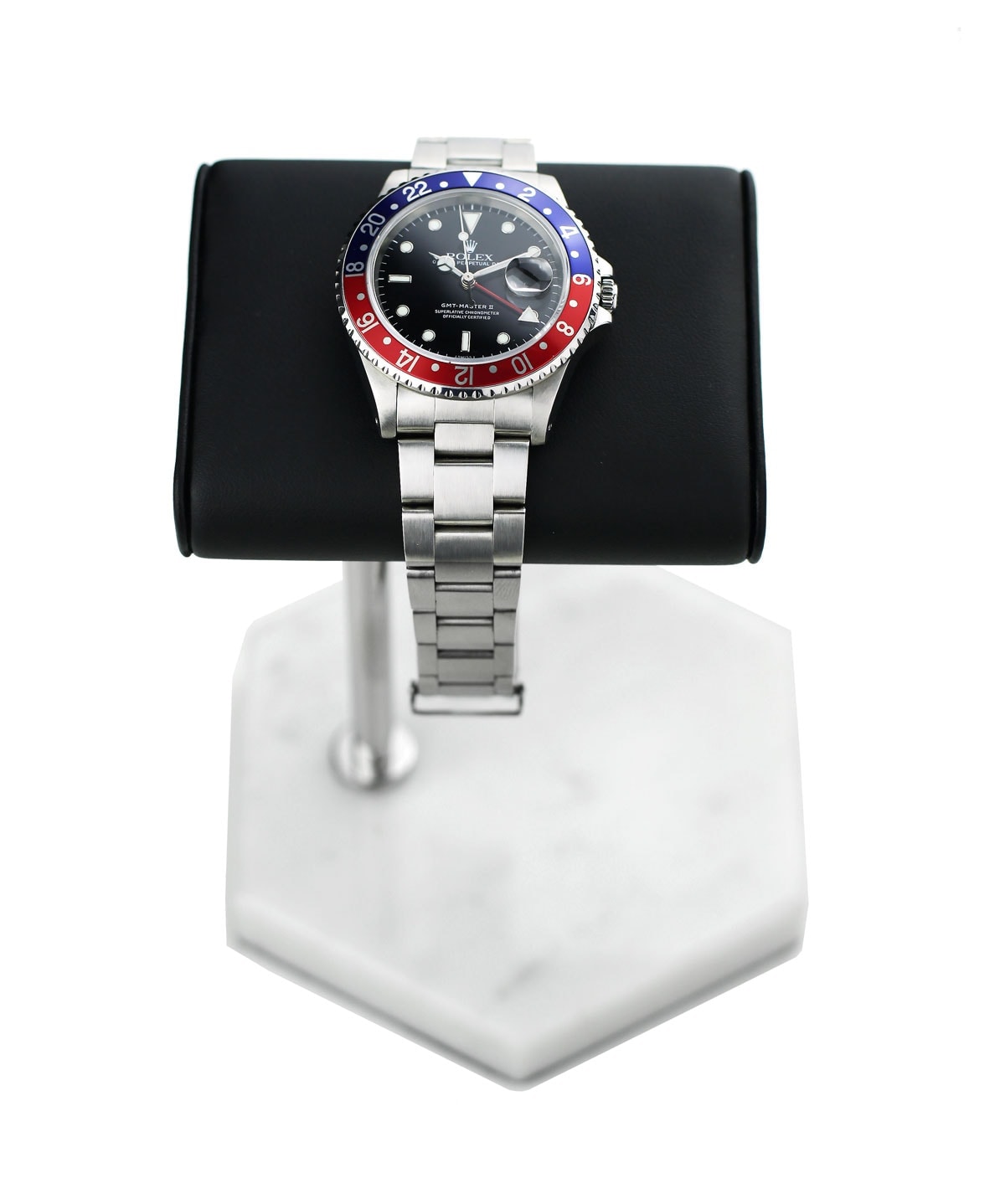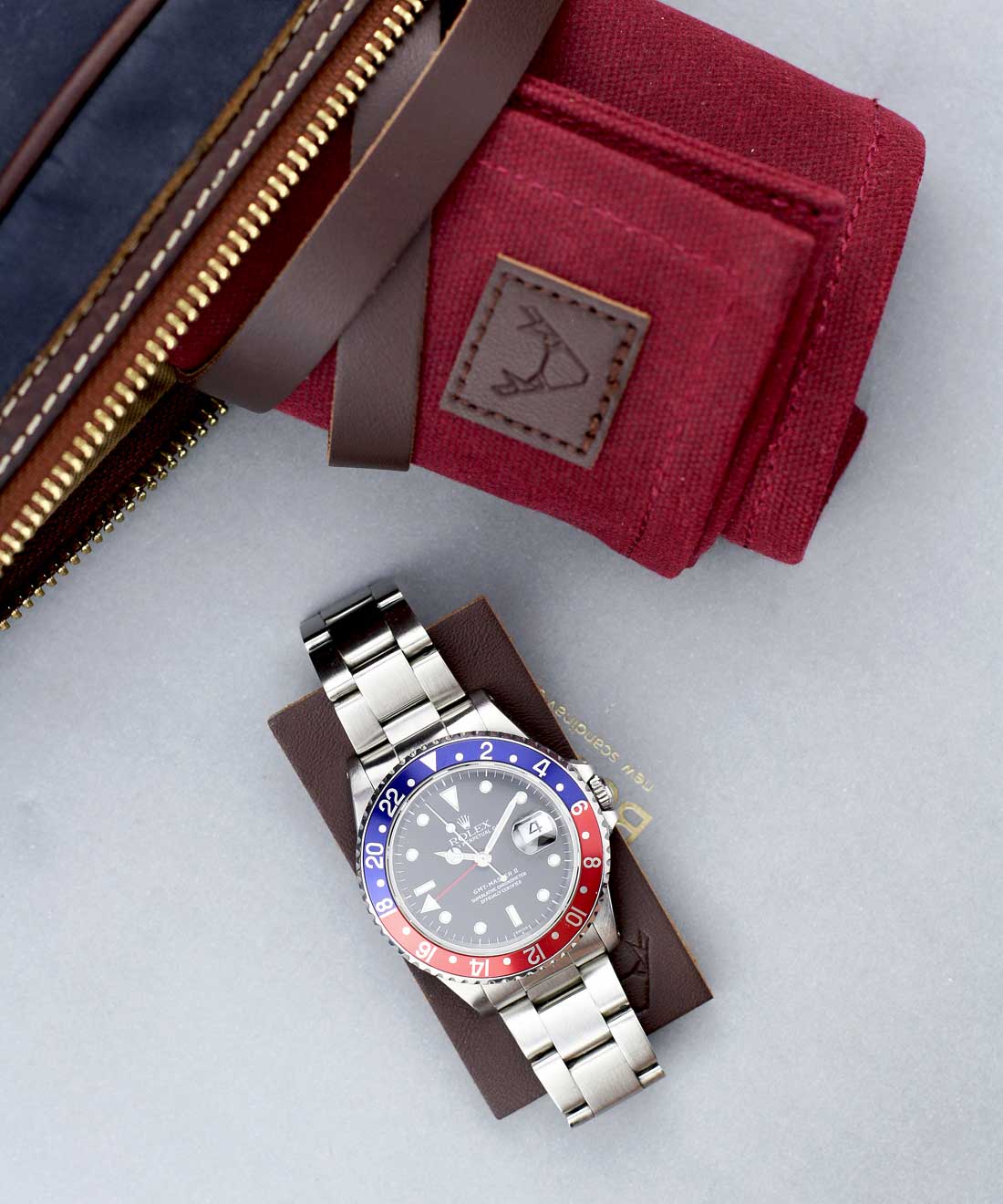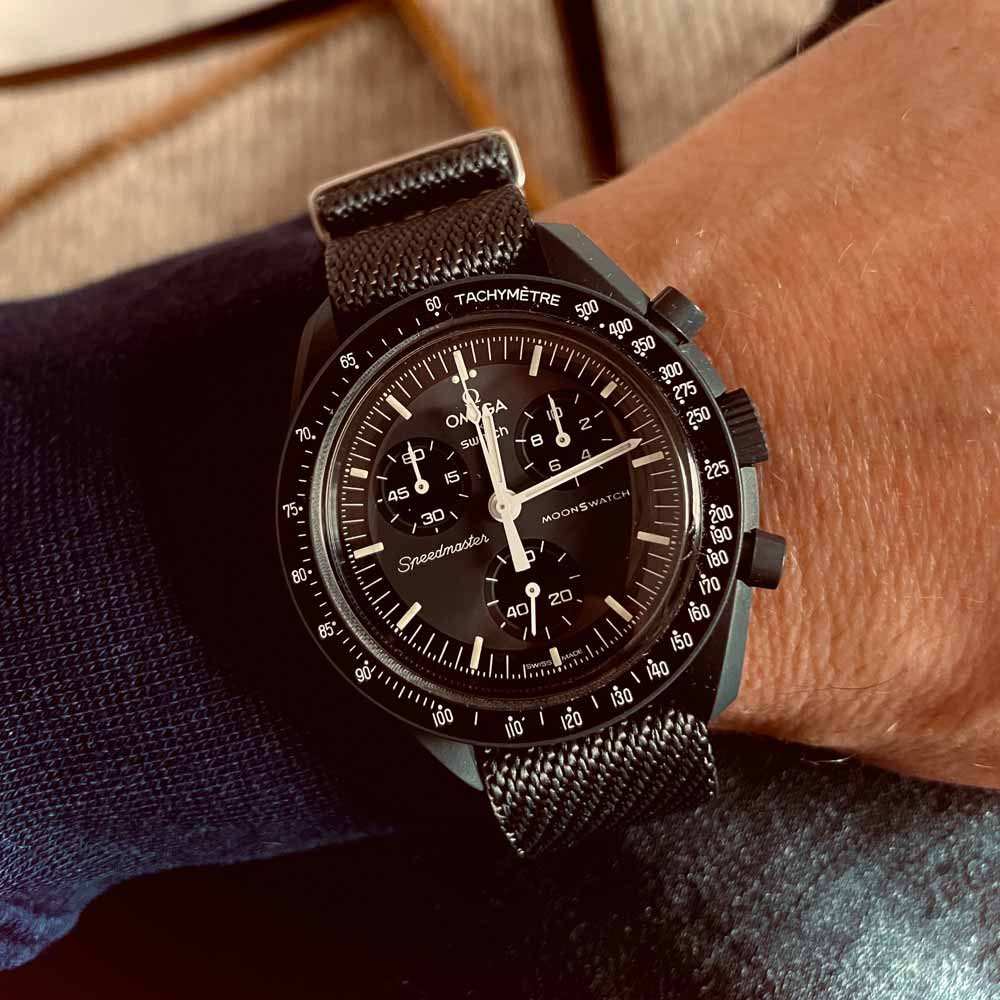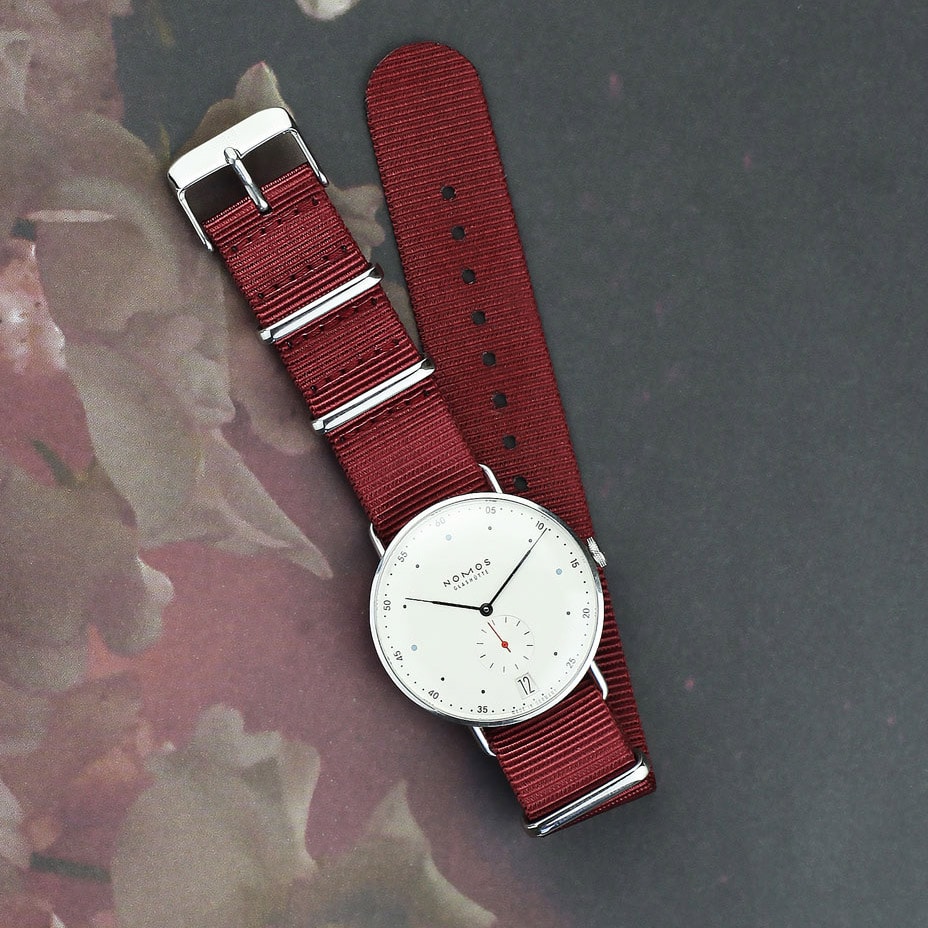AThis watch has been eagerly awaited and the time has finally come for Baselworld 2018: There is again a GMT Master II made of stainless steel with the legendary Pepsi bezel. It was first launched in this design in 1955, at that time still under the reference 6542. The watch was designed by Hans Wilsdorf, who created a model whose design makes the hearts of more than just enthusiasts beat faster.
The special thing about the GMT Master's appearance was and still is the red-blue bezel. Because of this color scheme, the model was called Pepsi shortly after its first publication among enthusiasts. This name comes from the Pepsi Cola brand name of the same name, which has been shown in the colors red, white and blue since 1950.
The development of the GMT Master goes back to a request from Pan American Airlines, who were looking for a watch for their cockpit staff that could display two different time zones simultaneously. Hans Wilsdorf's design convinced Pan Am's management so much that they equipped their cockpit and ground staff with the watch.
Rolex's striking design was last brought back onto the market in 2014. This was made of white gold and was therefore priced significantly higher than a steel version. Although the new edition pleased many lovers of the Pepsi GMT Master, it also fueled the longing for an available stainless steel model. In addition to the clear price difference, the steel versions of the Rolex models are also considered to be particularly durable and precise watches. In the past, anyone who wanted to buy a new stainless steel GMT Master II had to be satisfied with the so-called Batman version. It received the name Batman thanks to its black and blue bezel.
Stainless Steel Rolex GMT-Master II Pepsi from 2000
What are the differences to the last white gold version of the Pepsi GMT Master II?
As expected, there are some key technical innovations, such as Rolex's caliber 3285 manufacture movement. First of all, the new steel version has a Pepsi bezel made of Cerachrom, which is also installed on the white gold version. Thus, the bezel is not only scratch-resistant, but also its colors do not fade over time. At the same time, it is slightly wider than its old predecessor.
A very noticeable innovation on the GMT Master II Pepsi is Rolex's Jubilee bracelet, which replaces the original Oyster bracelet. The Jubilee bracelet was first introduced in 1945 with the Rolex Datejust. The name Jubilee came from the company's 40th anniversary after it was founded in 1905. The new bracelet consists of 5 parts lined up next to each other, which should offer a special wearing comfort. Like the case, the bracelet is made of stainless steel, with the combination of brushed and polished steel creating a particularly high-quality style. It may be important for many that the Jubilee bracelet of the new GMT Master II is not interchangeable with an Oyster bracelet. At the same time, however, continue to be conventional watch straps be worn on the watch.
An invisible but very important detail is also new in the watch, namely the movement. With the new variant, caliber 3186 is replaced by caliber 3285. The Chronergy escapement developed by Rolex and presented for the first time in 2015 is used for the first time in the GMT Master II. The advantages lie in particular in an improved lever geometry and higher efficiency. The Parachrom hairspring also offers greater magnet resistance thanks to new alloys. It also withstands shocks and temperature fluctuations much better. Last but not least, the power reserve has been increased from 48 to 70 hours. After being fully wound, the watch can be put aside for almost three days without having to reset the time afterwards.
The high demand and long waiting time speaks for a clear success of the new GMT Master II, even if it stands out visibly from its original appearance with the Jubilee bracelet. Our leather straps can be worn excellently with the new steel variant.







